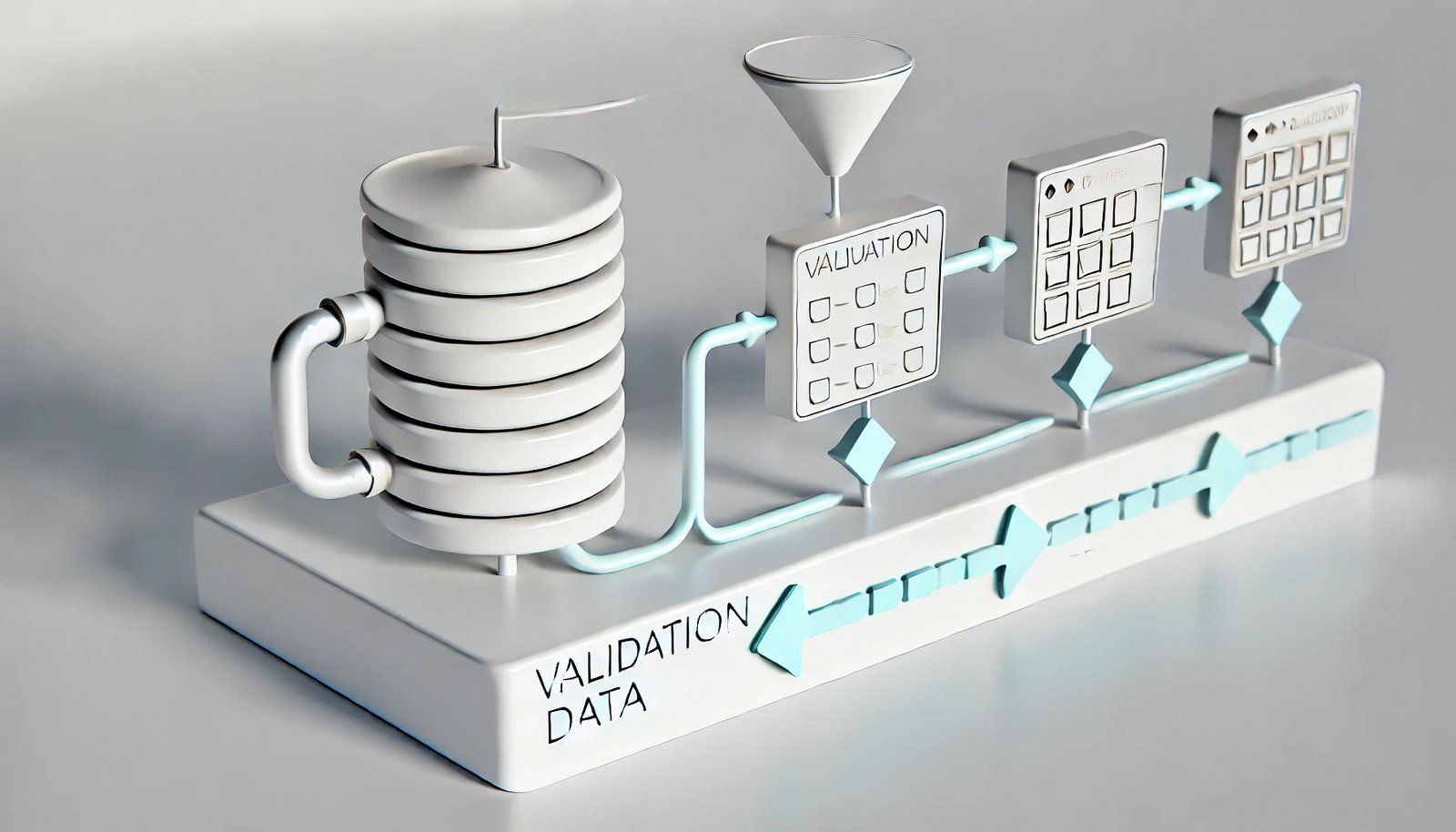Validation Data

Quick Navigation:
- Validation Data Definition
- Validation Data Explained Easy
- Validation Data Origin
- Validation Data Etymology
- Validation Data Usage Trends
- Validation Data Usage
- Validation Data Examples in Context
- Validation Data FAQ
- Validation Data Related Words
Validation Data Definition
Validation Data is a dataset used to evaluate the performance of a machine learning model during training. It serves as an intermediary between training and test data, ensuring that the model generalizes well to unseen data. The validation dataset is instrumental in adjusting model parameters and selecting the best-performing model by evaluating its accuracy, precision, and recall on non-training data. It prevents overfitting by enabling model assessment under realistic conditions, which helps optimize and improve predictive accuracy before final testing.
Validation Data Explained Easy
Think of validation data like a practice quiz you take before a big test. You study using your textbook (training data), then take the quiz (validation data) to see how well you know the material. The real test (test data) comes after the quiz. Validation data helps AI systems figure out if they’re ready for the real-world test by showing if they understand their training material well.
Validation Data Origin
The concept of validation data in machine learning grew from the need for unbiased model performance checks. It became essential as AI applications increased, especially in situations where overfitting—a model’s tendency to learn the training data too closely—could lead to poor generalization on new data.
Validation Data Etymology
The term “validation” is derived from the Latin word validare, meaning “to confirm or strengthen,” indicating its role in verifying the robustness of a model before its deployment.
Validation Data Usage Trends
The use of validation data has become more prevalent with the growth of machine learning applications across industries. To ensure reliable predictions, companies emphasize validation datasets in AI model workflows, especially in fields like finance, healthcare, and e-commerce, where prediction accuracy is crucial. Additionally, validation data's role in hyperparameter tuning is increasingly highlighted in AI research and development.
Validation Data Usage
- Formal/Technical Tagging:
- Model Evaluation
- AI Testing
- Machine Learning Development - Typical Collocations:
- "validation data set"
- "cross-validation accuracy"
- "validation process in machine learning"
- "fine-tuning with validation data"
Validation Data Examples in Context
- In image classification, a set of labeled images is used as validation data to adjust a model’s hyperparameters.
- Validation data helps fine-tune a predictive model in a retail system by confirming accurate product recommendations.
- A medical diagnostic model uses validation data to assess its accuracy in predicting patient outcomes before final testing.
Validation Data FAQ
- What is validation data?
Validation data is a subset of data used to assess a machine learning model’s accuracy and optimize it before deployment. - How is validation data different from training data?
Training data teaches the model, while validation data checks its accuracy before testing on real-world data. - Why is validation data important in machine learning?
It helps prevent overfitting and ensures the model can generalize well to new data. - How is validation data used in model tuning?
Validation data assesses performance, helping adjust parameters to improve prediction accuracy. - Is validation data part of the final testing phase?
No, it’s used before final testing to optimize the model. - What’s the difference between validation and test data?
Validation data optimizes the model; test data evaluates its final performance. - How is cross-validation related to validation data?
Cross-validation involves splitting data multiple times, using different segments as validation data to ensure robust model evaluation. - Can validation data overlap with training data?
No, validation data should be separate from training data to provide an unbiased assessment. - Why can’t we rely solely on training data for model evaluation?
Relying only on training data can lead to overfitting, reducing accuracy on unseen data. - Is validation data necessary for every machine learning project?
Yes, validation data is crucial for ensuring accurate and unbiased model performance.
Validation Data Related Words
- Categories/Topics:
- Model Assessment
- Machine Learning Development
- AI Model Optimization
Did you know?
Validation data plays a major role in neural network training. By helping identify overfitting early on, it allows models to adjust dynamically, enhancing performance for applications like autonomous driving, where reliable real-time decision-making is critical.
PicDictionary.com is an online dictionary in pictures. If you have questions or suggestions, please reach out to us on WhatsApp or Twitter.Authors | Arjun Vishnu | @ArjunAndVishnu

I am Vishnu. I like AI, Linux, Single Board Computers, and Cloud Computing. I create the web & video content, and I also write for popular websites.
My younger brother, Arjun handles image & video editing. Together, we run a YouTube Channel that's focused on reviewing gadgets and explaining technology.



Comments powered by CComment